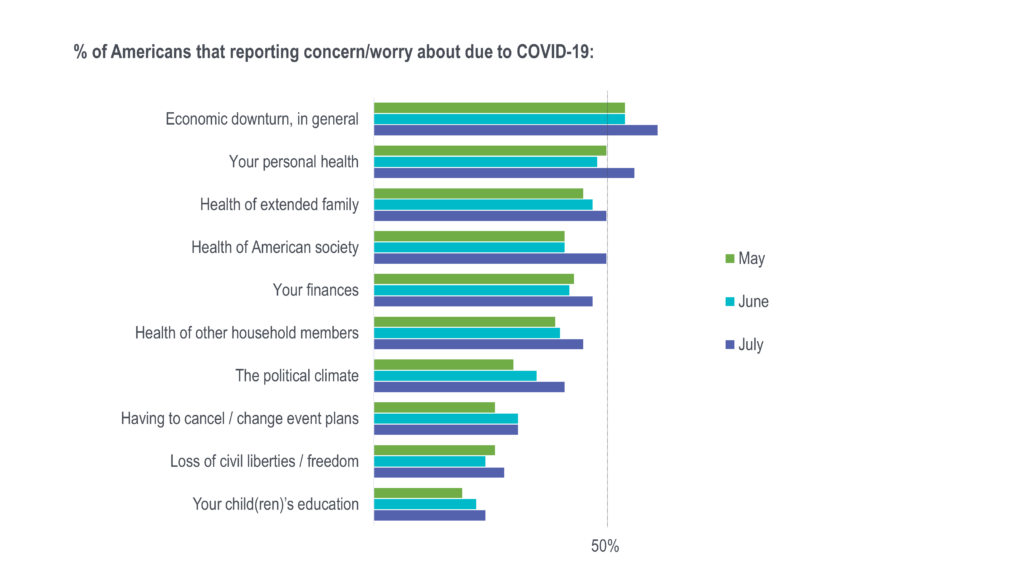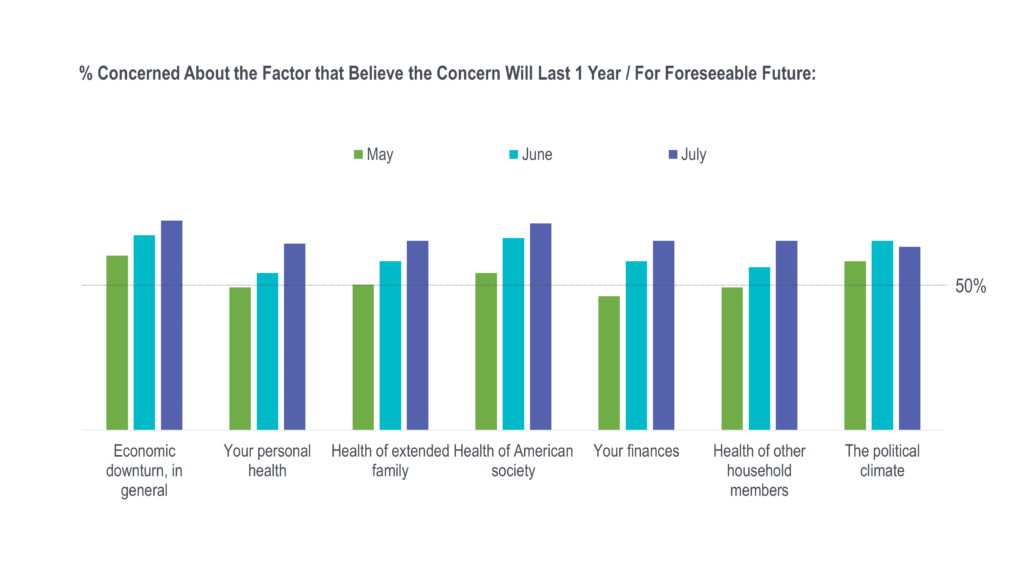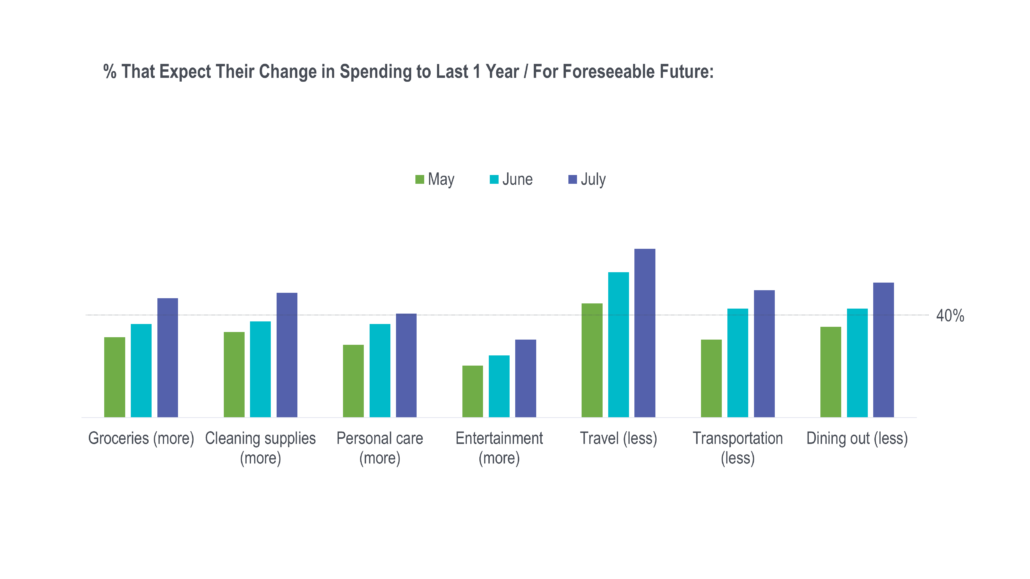As the pandemic lingers on, consumer sentiment about what the future holds has changed. In May, we saw that consumers were fairly optimistic about how long the impact of COVID would last, with most thinking life would mostly return to normal in 3-6 months. But over the past two months, as states opened up and cases began to rise again, consumer sentiment has evolved. Now we see that there are much higher levels of uncertainty and more realistic / pessimistic thoughts about how long life will be disrupted by the coronavirus.
This blog overviews which concerns are growing the most and how long consumers now expect their concerns and corresponding behavior changes to last.
Consumer concerns are growing, significantly
Ongoing uncertainty about the length of the pandemic, the reality of a vaccine, and how America will adapt over the remainder of 2020 has Americans worried. As of July, 96% of Americans report they have one or more concerns due to the pandemic with the economy, health, and personal finances being the most common concerns. And these concerns are growing significantly. As of May, 54% of Americans reported they were concerned about an economic downtown and that is now up to 61% as of July. In May, half of Americans were concerned about their personal health and that is up to 56% in July. And those concerned about their personal finances have risen from 43% in May to nearly half of Americans in July.
Other concerns that weren’t as widespread in May, but are growing significantly surround the political climate (41%, +11 pts since May) given the upcoming election and children’s education (24%, +5 pts since May) given the uncertainty around when and how children will return to school.

Consumers expect these concerns to last for ‘foreseeable’ future
In May, consumers indicated more optimism about the future, expecting life to get back to normal within the next 6 months but as the pandemic as lingered on, this sentiment has shifted.
Of the top concerns held by Americans, the amount of time consumers believe these concerns will last has increased. As of July, 70% of Americans said they expect their concerns about the macro environment, including the economy and the health of American society, to last a year or into the foreseeable future, significantly up since May.
The growing macro concerns are also translating to how long Americans are think the concerns about their own situation will last. Six in ten Americans said they expect to worry about their health, their health of their family, and their finances for at least the next year as well, also up significantly since May.

Consumers expect their changes in spending to last well into the future
At the onset of the pandemic, consumer behavior and spending changed due to stay-at-home orders and a desire to avoid contracting the virus. As a result, in May, consumers reported spending much more money on groceries, cleaning supplies, personal care and entertainment while reducing spend on travel, transportation and dining out. While these spending changes aren’t surprising, what is notable is the fact that as time goes on, consumers’ prediction of return to normal is lengthening, rather than lessening. In May, the average consumer believed their spending habits would return to normal by October of 2020, but by July, that prediction had extended to February of 2021, on average. Long story short, for most Americans, perceptions of the lasting impact of the pandemic are worsening, rather than getting better.

Consumers now recognize it will be well into next year before life returns to normal. As you think about how to serve your consumer at this time, consider the opportunity to bring them positive experiences through convenience, reassurance, entertainment, and good value at a time when they have a lot to worry about – at least for the foreseeable future.

 Linkage Research 2020
Linkage Research 2020